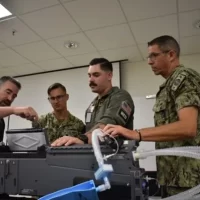U.S. DoD Selects CCC, Thornhill Medical for Critical Care Devices
Future Ready. Today.
Thornhill Medical is transforming the delivery of critical care in austere and unpredictable combat casualty care, emergency and humanitarian environments with MOVES® SLC™ and MADM™.
We inspire and enable other new technologies to unlock vital life-saving solutions. Explore our Next Tech.
Celebrating our 20th year, we are a Team committed to courage, collaboration and saving lives.
Meet Our Team. We’re Here to Serve.
International
Serving geographies around the world, our International Team is ready to understand your needs.
U.S.
From coast to coast, our U.S. Team supports local, state, federal and military medical teams.
Training
Providing our customers with clinical and technical expertise and training for successful field operations.
Service
Our Team of skilled biomedical service technicians offers a range of service options to protect your investment.

New US Navy En-Route Care System
MOVES® SLC™ deployed as part of the first En-Route Care System (ERCS) aboard US Navy’s Eisenhower Strike Group (IKECSG).

Innovation – Pursuing the Unimaginable

Teamwork
Thornhill Medical is proud to have a high-calibre, mission driven Team. Staff well-being and dignity is at the core of every decision we make.
